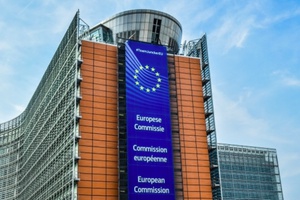Nuclear power and natural gas: what lies behind EU inconsistencies? edit

On December 21, the European Commission has just presented the new “state aid for climate, environmental protection and energy” regime, the main objective of which is to facilitate the achievement of the 2030 and 2050 climate objectives by authorising subsidies for all technologies contributing to the energy transition. However, nuclear power is excluded, while natural gas-based electricity production is covered. Why such an inconsistency?
Over the last few months, member-states defending the nuclear option have focused on the famous taxonomy, which consists of labelling “sustainable” equipment and technologies in order to make them benefit from preferential funding, so that nuclear power should be included, countering the influence of Germany, which succeeded in having it excluded from the taxonomy first draft at the end of 2019.
This is not won yet, as meanwhile DG Competition has been concocting in its corner, without real dialog with governments, the reform of the 'guidelines' defining the rules under which Member States can grant state aid to companies in this domain. In the last five-year period these guidelines only covered renewable energies. The new guidelines will codify the structure of long-term contracts guaranteeing revenues per MWh, encouraging their allocation by auction to maintain competition pressures. However, nuclear, the ultimate low-carbon technology in the power sector, will not be covered, which also means that there is a good chance that it will eventually be excluded from the taxonomy.
Excluding nuclear from the new guidelines is a decision with far-reaching consequences, as we shall see.
Firstly, if nuclear is not covered by the guidelines, contracts for power plant projects can only be authorised on a case-by-case basis (as was the case with the UK's Hinkley Point C project and more recently the Czech Dukovany project). Such processes are fraught with transaction costs, delays and uncertainties, which would be avoided by inclusion in the state aid regime.
Secondly, the financial stake is also considerable: when a project includes a revenue guarantee contract, it can be financed by borrowing at a reduced capital cost. It should be noted that the financing costs of a nuclear power plant represent a very significant part of the initial investment, and therefore of the cost price of the electricity produced. With these de-risking contracts, the capital cost could be 4-5%, instead of 8-10% presently, which would make the cost price per MWh 40% cheaper for the same overnight investment cost.
The main issue of the new guidelines is to facilitate the achievement of the 2030 and 2050 climate objectives. They broaden the scope of possible aid to domains such as electric mobility, industrial decarbonisation, thermal renovation of buildings and the circular economy. This concerns in particular the “carbon contracts for differences”, which are much talked about for these technologies. These contracts will consist of the State paying the difference between the price of carbon in the European tradable quota system and the cost of reducing emissions that the equipment would allow compared to conventional equipment (such as between the production of green hydrogen by electrolysis and conventional production by natural gas team-reforming ).
DG Competition states that “anything that undermines climate ambitions will no longer be recognised under the state aid regime”. But at the same time it tells us that a “special clause” will apply to natural gas, allowing “Member States with the lowest GDP to switch from coal to gas”. This would apparently include countries such as Poland, Bulgaria and Romania, which are still heavily dependent on coal for power generation and are planning to invest in gas projects to replace it. But wouldn't these countries be also helped in their transition by a measure favouring nuclear power and its financing, since they have ambitions in this area, precisely to decarbonise?
Excluding nuclear power and including natural gas is doubly inconsistent. Behind this choice, we can guess that Germany is at the helm, because it is the first beneficiary of the pragmatic measure in favour of gas, the importance of which is crucial for it in view of the difficulties that await it in its transition based solely on renewable energy sources. The problem here is that this German solution is being imposed on other countries. In this field as in others, Germany tends to impose its political compromises on the other Member States, regardless of the interests of the other countries. And the “French” nuclear solution, which would open up other possibilities for these countries, is subject to unfavourable arbitration which also hampers the economic efficiency of this option in France.
Let's call a spade a spade: in energy matters as in other domains, there is no longer a Franco-German axis. Europe as it had been initially conceived with the European Community of Steel and Coal and Euratom no longer exists. The two largest Member States diverge on the choice of electricity mix, and the most powerful not only pushes its own interests but also seeks to hinder the nuclear option of the second, by trying to impose its choices on renewable electricity in a Europe whose markets are closely interconnected. All this poses a fundamental problem for the future of Europe.
At the end of this year, the game on guidelines and taxonomy is not yet completely over. It is therefore urgent for France to react by taking advantage of the period of the French presidency of the EU. The coalition of ten countries defending nuclear power must be strengthened, and the Netherlands, whose government is seeking to reopen the nuclear option, could be added.
Vous avez apprécié cet article ?
Soutenez Telos en faisant un don
(et bénéficiez d'une réduction d'impôts de 66%)

